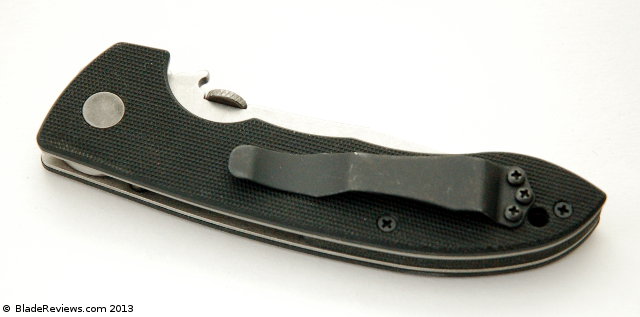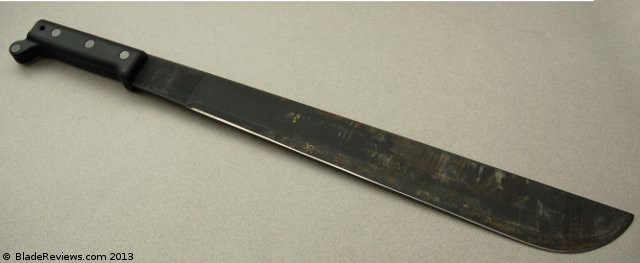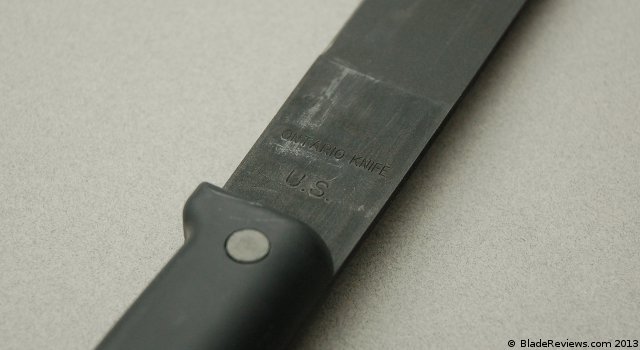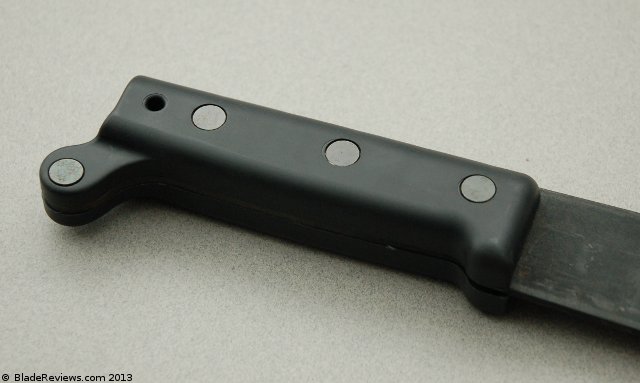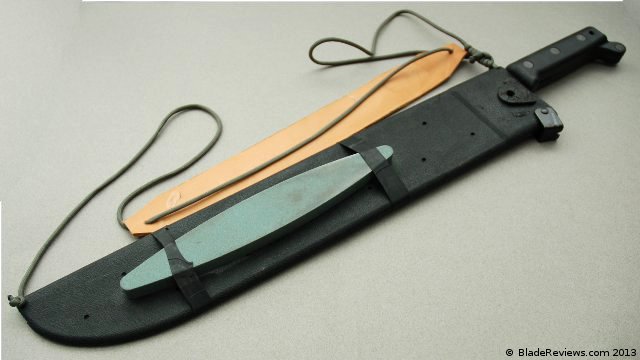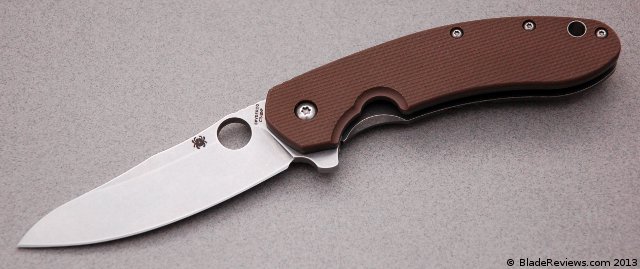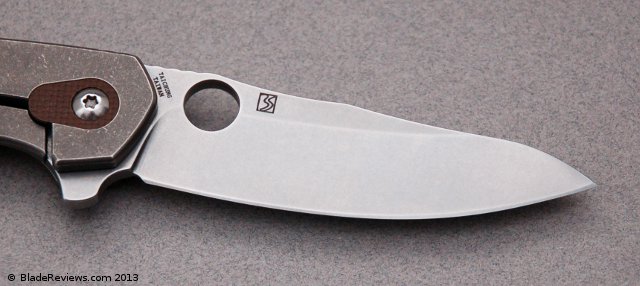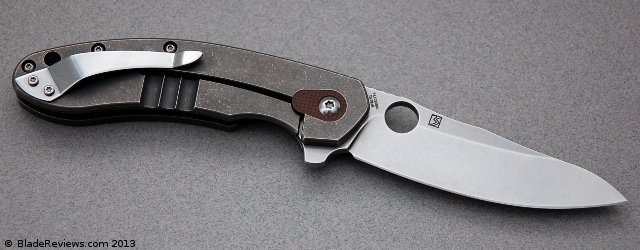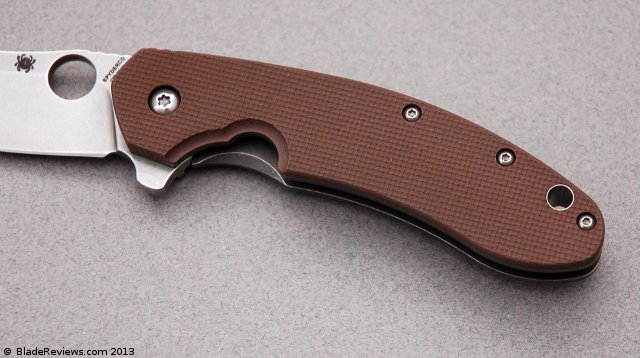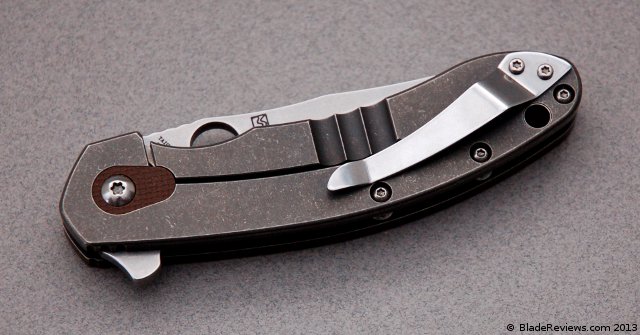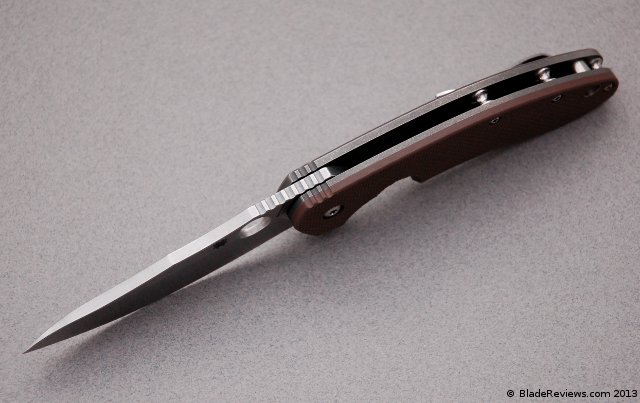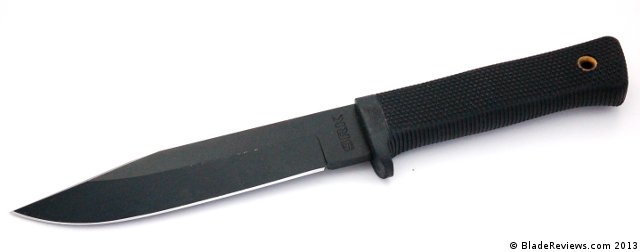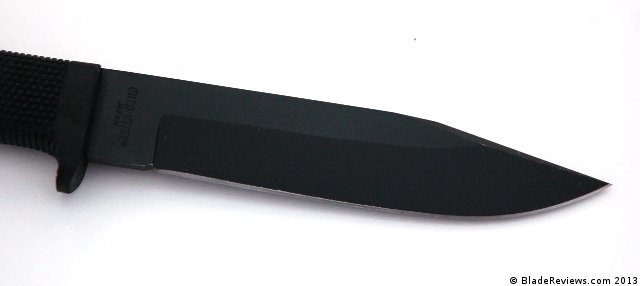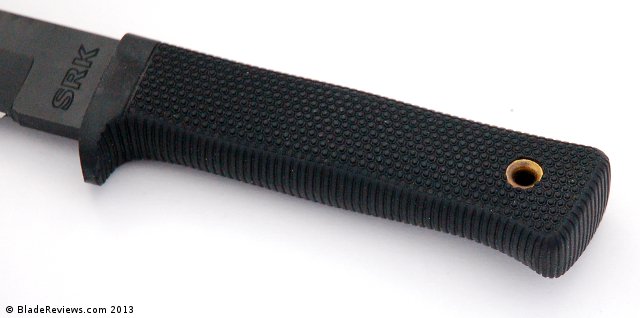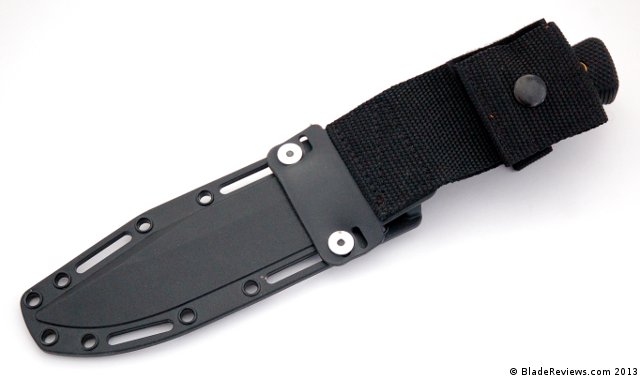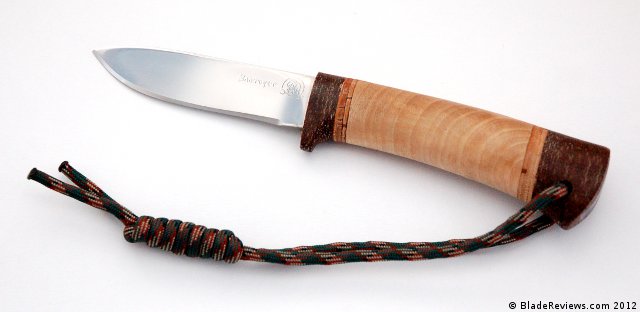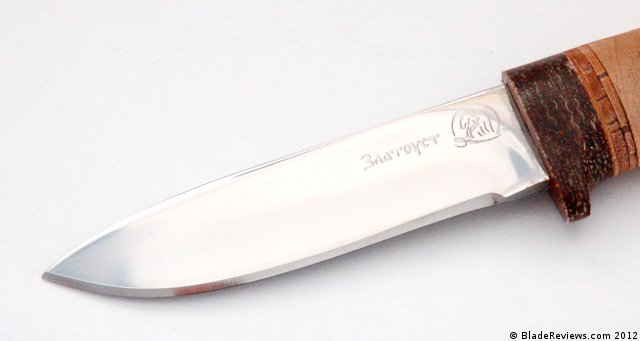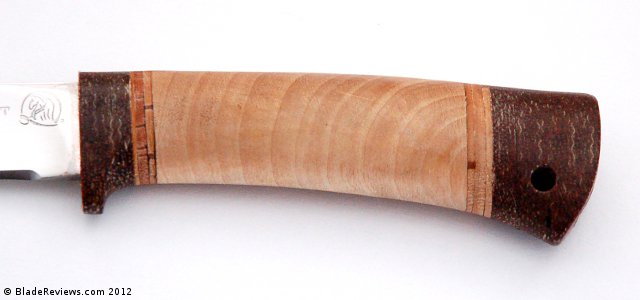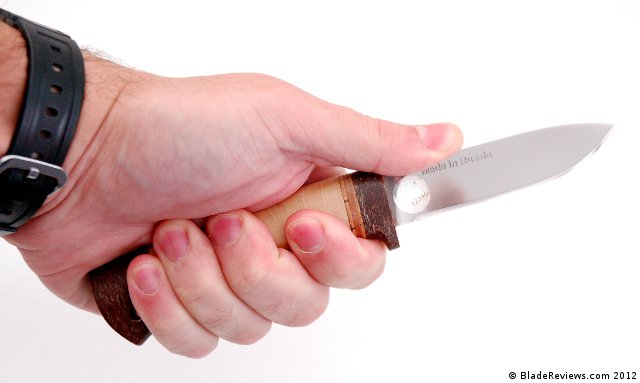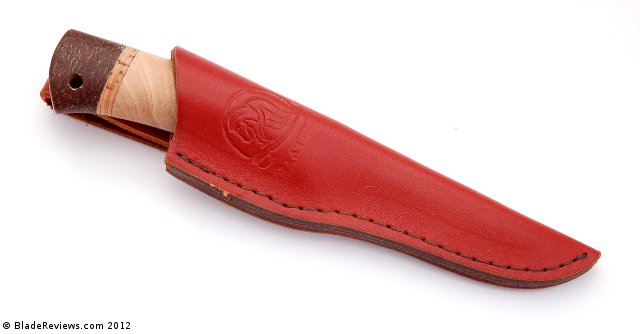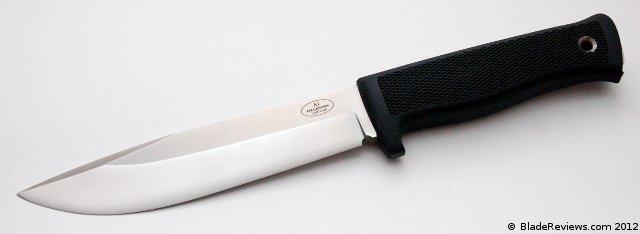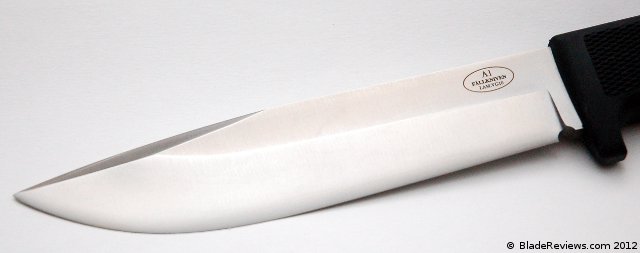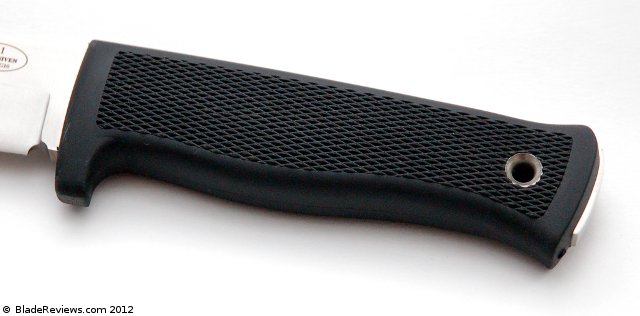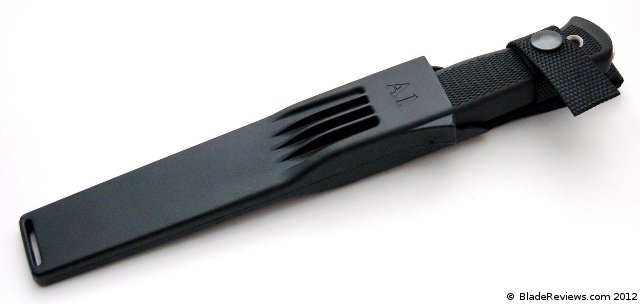Last Updated: August 4, 2019
I have bought a number of Emerson knives under the guise that they were going to be my next EDC. Ernest’s blades have an American bravado to them that I really enjoy, and on several occasions I’ve found myself say, “Oh yeah, I’m going to EDC the heck out of this thing,” as my cursor hovers over the buy button. When the knife arrives it’s usually about twice as big as I imagined. The unfortunate truth is that while I enjoy the knife for what it is, it never ends up staying in my pocket.
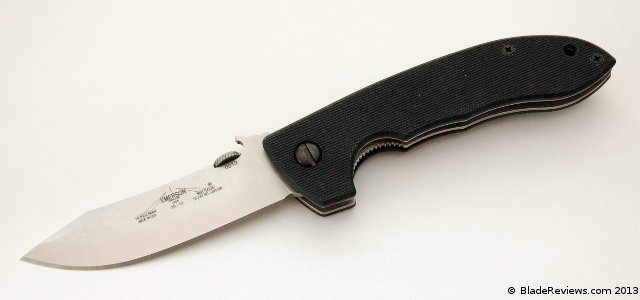
Buy the Emerson Horseman at BladeHQ
I have (presumably) learned from this mistake several times now, and purchased my latest Emerson, the Horseman (aka the mini CQC-8), because it is a smaller knife.
Ernest calls this scaled down version of the CQC-8 “the Horseman” because it was designed to be carried while riding a horse. I haven’t been near a horse for at least a decade, so unfortunately I will not be providing any commentary on the blade’s equestrian capabilities. That said, I do hope to answer whether the knife is a worthy urban EDC.
General Dimensions and Blade Details
The Horseman has an overall length of 8.35″, sports a 3.54″ blade, and weighs 4.8 ounces. Compared to previously reviewed Emersons like the Super Commander and CQC-13 this is a much smaller knife. That said, this is still an Emerson, and it still has a blade over 3.5″ inches long. It’s got a pleasant thickness to it, a reassuring heft, and generally isn’t what I would call a small knife. While it is definitely more pocketable than some of their other offerings, it’s no gentleman’s folder either.
It’s hard for me to determine what exactly the blade shape would be classified as – perhaps a modified clip point? Some call it “the banana blade,” and to me that is as good a classification as any. The curved edge comes to a very acute tip thanks to a finely ground swedge. Like all of my other Emersons I have handled, the blade has been beautifully ground. I once again opted for the stonewashed version. I love the way stonewashed version is finished with it’s sparkling flats and satin grinds.
Like most Emerson knives this blade has been V ground, but is left with a chisel ground edge. Ernest claims this is done for ease of sharpening, and I must say that the edge was very easy to maintain. The steel is 154CM: a well-balanced blade material that should be no stranger to regular readers of this blog. 154CM sharpens nicely and holds a good edge.
I tested the Horseman out on a variety of materials. I started with a 6-foot length of 1/4″ thick sisal rope and had no issues cutting it inch long sections. I then moved on to a piece of 3/4″ thick manilla rope – a pretty nasty material – and the Horseman once again cut cleanly and with confidence. I found the jimping on the spine of the blade a bit aggressive under repeated hard cutting, but for normal work I think you will find it is alright.
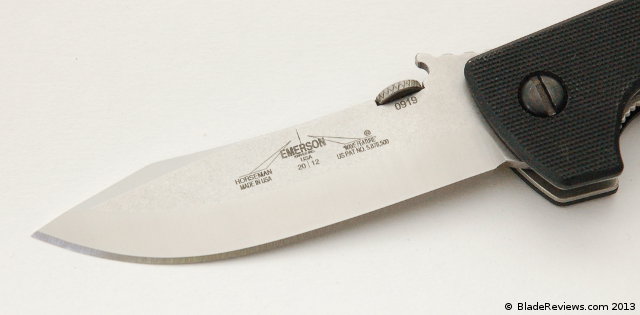
I touched the chisel edge up on a strop and then moved along to several pieces of cardboard. The Horseman cut without issue although I do prefer a more conventional V ground edge over a chisel edge for cardboard. I find that a V edge tracks through cardboard a little easier, but that could just be due to my relative inexperience with chisel edges. I will say that the chisel edge is capable of getting razor sharp with very little effort. Ultimately I was satisfied with how the Horseman worked on cardboard.
I rounded things out with a little carving on a piece of pine 2×2. The fine chisel edge made for an aggressive carver, and I was pleased with how quickly the knife removed material. I have to admit that I found the handle pretty uncomfortable under this kind of use, and resorted to wearing a glove to finish the job. That is pretty much par for the course with most folders, but I felt it was still worth mentioning.
Ultimately I found the Horseman to be a capable cutter well suited to a variety of tasks. As expected, the 154CM held onto its edge, and was easy to keep sharp. I had no issues with rust or corrosion either.
Handle, Ergonomics, and Pocket Clip
The Horseman’s handle follows the same formula of all of Emerson’s other knives: black G10 scales over a steel non-locking liner and a titanium locking liner with a black G10 backspacer. Everything is held together with Phillips and flat-head hardware. If you have seem one Emerson handle, you have pretty much seen them all. My Horseman came well finished. All of the parts are well lined up, there are no tooling marks on the liners, and everything is very solid. It’s simply constructed, but also well done.
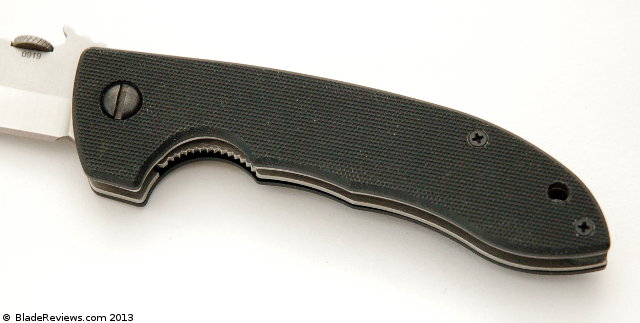
From an ergonomic standpoint, the Horseman benefits from Ernest’s decades of knife design and martial arts experience. The Horseman feels very natural in both forward and reverse grips. The deep finger guard makes it difficult to slip forward on the knife, and the thick handle provides plenty of support for your palm. The jimping on the thumb ramp provides good traction, but it can get uncomfortable under extended use. For normal use I think most will find the thumb ramp to be comfortable.
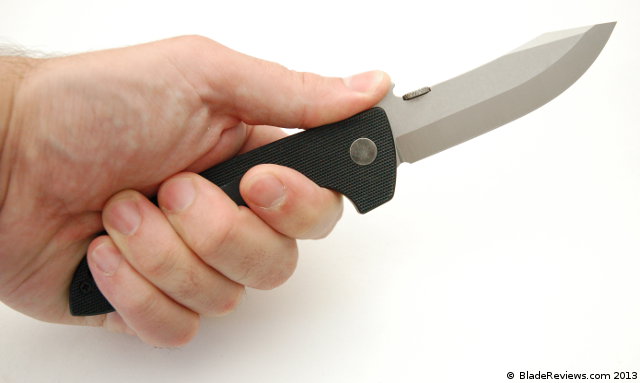
The pocket clip is the same clip found on all Emerson knives. It’s a simple black parkerized clip and is very similar to the standard Benchmade clip. This isn’t an ultra deep carry, but the Horseman rides reasonably low and carries discretely in the pocket. Despite being a “mini” Emerson, this is still a thicker knife, and it still weighs 4.8 ounces. I definitely felt it while carrying it around, but there are certainly bulkier knives on the market. It carries better with jeans and thicker fabrics.
Deployment and Lockup
The Horseman makes use of Ernest Emerson’s patented wave feature for deployment. For the uninitiated, this is a tried and true method of rapidly opening a folding knife. They also included a thumb disk on this model, which is easy to access and suits the lines of the knife. My model came a little stiff, and could probably stand to be taken down, cleaned, and reassembled with some tuf-glide or other high end lubricant.
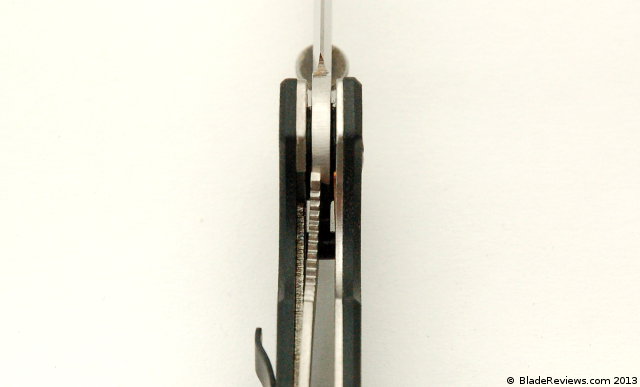
For lockup we have the aforementioned titanium locking liner. It is a bit thicker than the steel non-locking liner, and engages nice and early. There is a little stick on the lock of my knife, but it isn’t obnoxious. There is no blade play in any direction. There is something very purposeful about the way this knife was manufactured and assembled, and the solid lockup adds to that feel.
Emerson Horseman Review – Final Thoughts
The Horseman is another well contemplated offering from Emerson, and I think it will satisfy fans of Emerson’s products that want something a little more manageable for carry on a daily basis. It has the same features and design quirks of its bigger brothers, but it doesn’t compromise in ergonomic or cutting performance. That said, this is still a thick knife, and at 4.8 ounces I definitely feel it in my pocket. Whether it will make a practical EDC knife for you is entirely subjective.
I will say that this is a sturdy no-nonsense knife, and I was surprised with how much I have enjoyed it. My particular knife is immaculate, and it has been fun to carry. If you can find one as solid as this I think you will like it.
I recommend purchasing the Emerson Horseman at BladeHQ. Purchasing anything through any of the links on this website helps support BladeReviews. As always, any and all support is greatly appreciated! Thank you very much.
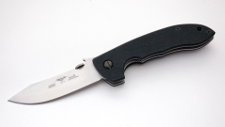
Emerson Horseman
From: BladeHQ
I recommend buying the Emerson Horseman at BladeHQ or Amazon. Thanks for checking out the review.
